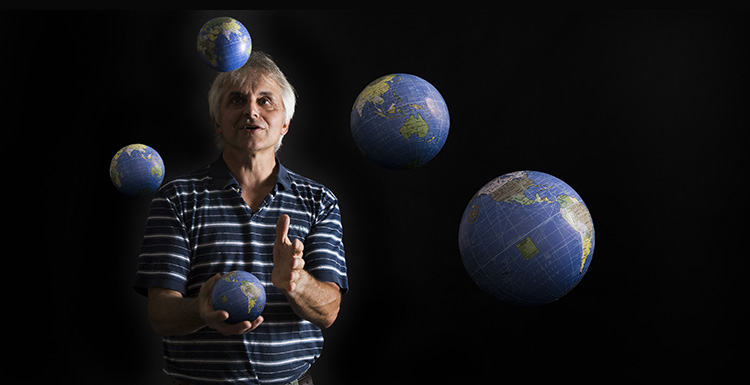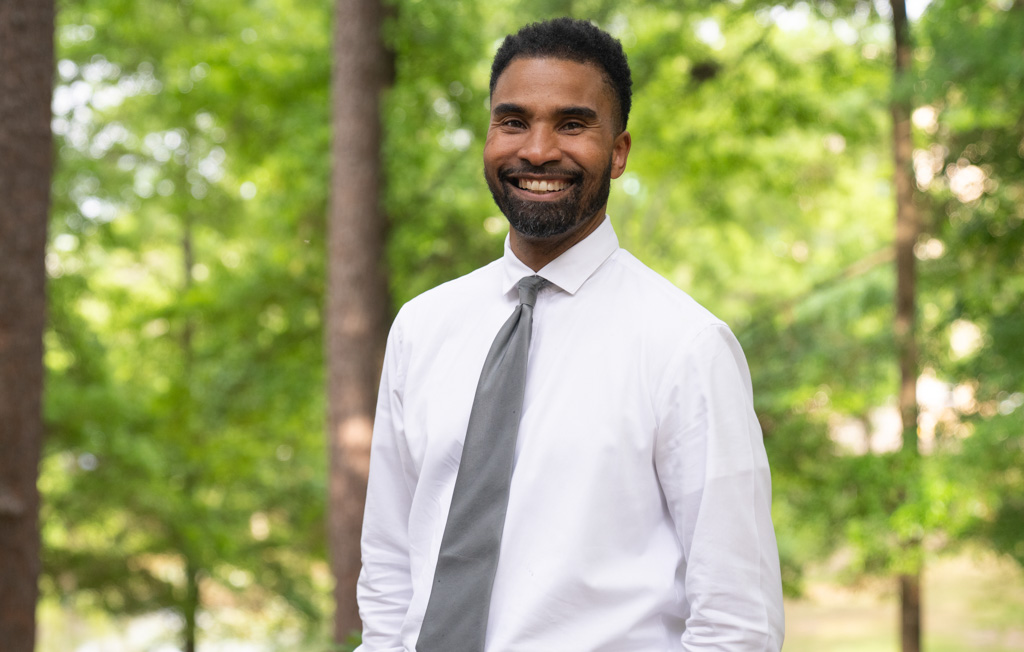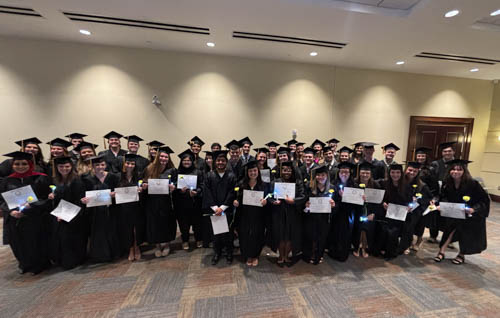5 Ways the Earth Is Trying to Kill Us
Posted on July 27, 2016

Dr. Doug Haywick, associate professor of geology at the University of South Alabama, enjoys presenting his light-hearted lecture, “Five Ways the Earth is Trying to Kill You,” to lay audiences and then watching the reactions when science-established arguments collide with the narrative touted by the media and pop culture.
Haywick doesn’t anticipate the end of life on Earth in the foreseeable future, but believes that geological history unequivocally reveals that Old Mother Earth does not make life easy for any organism on this planet; humans included.
“It's not as if the planet is specifically targeting us, but the constant changes that occur in the environment work around-the-clock to challenge every living organism,” Haywick said.
As far as humans are concerned, Mother Earth may do the job before humanity has the chance to eradicate itself.
“Everyone’s opinion about the future is valued, it’s just that not everyone’s opinion about what the future will actually be like is feasible,” Haywick said recently after presenting “Five Ways” at a Mobile Science Café. “Plenty of ideas about what will kill life on our planet sound reasonable, but some are more likely than others if you consider what science tells us previously happened. The present is the key to the past, and mass extinctions — where lots of different organisms all die off at the same time — are actually quite common.”
He enjoys making his presentation because “it’s a chance for people with a vested interest in evolutionary change to exchange ideas with other similarly interested people.”
Haywick shares five ways that the Earth is “trying to kill us off”:
- Evolution
“This is, in many ways, the most dangerous one. In the 4.6 billion years that life has existed on Earth, this planet has never been consistent. The atmosphere has changed. The position of the continents and oceans has changed. The climate has changed. Just when life gets it right for a particular set of conditions, things change again and those organisms that can't adapt quickly enough, die off. Evolution is constantly changing the game plan and seemingly wants to replace us with something more successful. The only reason mankind has survived evolution is only because of chance, good fortune and being remarkably adaptively — so far!”
- Microbes
“These beasties have been on the Earth the longest amount of time, and they are the most adaptable organisms out there. Since the 1970s, with increasing undersea research, we’ve discovered many more diverse microbes than we’d previously thought existed. And there are lots of them! If you put all the microbes on the planet together, it would cover the Earth five feet deep. They live in the water, in the air, on your skin and in you. And every once in a while, they evolve into something our bodies can't handle very well. Think SARS, or Ebola, or Zika.”
- Carbon Dioxide Imbalance
“Something as simple as elevated carbon dioxide levels in our atmosphere could easily wipe out a large proportion of life on the planet because of the associated increase in temperature. It likely happened before and is one theory about what killed the dinosaurs 65 million years ago. Carbon dioxide is one of those things that when there’s too much, it’s bad. But, too little can be just as bad. The entire planet froze over twice in the distant past because there was too little CO2 in our atmosphere. The big freeze is unlikely to ever happen again, but the planet is heating up, and with it the oceans are rising. Humans could move inland, but that is hardly a solution to this complex problem.”
- Magma
“This is the hot fluid, or semifluid, material below the surface of the Earth that is released as lava when volcanoes erupt. I’m not convinced as some people are that the eruption of Old Faithful in Yellowstone is an inevitable disaster that is destined to wipe out the entire population of the United States, but there is credible evidence to suggest that past eruptions have impacted life across the planet. Major lava floods 65 and 245 million years ago correspond to two of the five major mass extinctions that occurred in our planet's past, and explosive eruptions hundreds of times more powerful than the Mount St. Helen's event are common in Earth history. They will surely happen again, and their impact on humanity could be devastating.”
- Gravity
“All the other things we’ve talked about are slow and steady dangers, but gravity, the weakest force that most people usually forget about, can result in an extremely fast demise. Gravity is the reason why meteorites hit the Earth. Billions of years ago when there was a lot more orbiting detritus, asteroids and comets constantly hit the Earth, but over time, their abundance dropped off, and now large impacts are fortunately rare. We are also lucky to have a large moon orbiting us, as it has sheltered us from many more extinction-level collisions, but every once in a while, an asteroid has made it past the moon, and it was bad for life on the planet.”
In the end, Haywick reminds his audiences that there’s never been a time in Earth’s history without a disaster of some sort.
“It's bad news when you are on the receiving end of a mass extinction, but with death comes the opportunity for renewal. Within a relatively short period of time, geologically speaking, new life forms appear that are adapted to the prevailing environmental conditions,” Haywick said. “Humans would not be the current dominant lifeforms on the planet today if the dinosaurs had not been wiped out 65 million years ago. The only real question now is how much longer we have before the clock is reset again.”
Archive Search
Latest University News
-

Dr. Matthew Pettway Named Fulbright Scholar
Pettway will teach and conduct research as a Fulbright U.S. Scholar in...
April 24, 2024 -

USA Launches New Hospitality and Tourism Concentrations
Global leadership and events marketing and management concentrations w...
April 17, 2024 -

Mortar Board Receives National Award, Initiates New Members
South's chapter of Mortar Board has received the Ruth Weimer Mount Cha...
April 17, 2024 -

USA Administrator Named as Faculty at National Institute
Dr. Mike Wilkinson has been chosen as a faculty member for 2024 New Pr...
April 16, 2024


